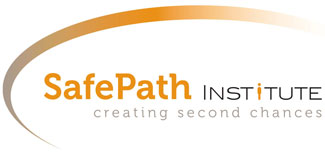THE SAFEPATH METHOD
A method for empowering teams
SafePath is an evidence-based method, created by Dr. David Bernstein, that empowers teams and organizations that work with challenging clients. We define a team as any group of individuals that works together to provide care, for example, on the ward of a hospital, addiction center, youth residence, or prison, or in a community-based team, such as child protective services. SafePath aims to improve team functioning and dynamics; provide professionals with more effective ways to intervene with challenging behaviors; and create healthier, safer, and more therapeutic environments on wards or in the community.
SafePath combines the principles of Schema Therapy, an evidence-based therapy for personality disorders, with Positive Psychology. We train teams to provide for clients’ core emotional needs – especially the needs for attachment and safe limits – and work with extreme emotional states known as “modes”. Modes dominate a client’s functioning – their thoughts, feelings, and behaviors – at a given moment. When clients exhibit difficult-to-manage behaviors, we understand them in terms of modes. For example, modes can be dominant, aggressive, impulsive, emotionally vulnerable, angry, or detached from emotions. We teach professionals how to recognize and respond effectively to modes when they occur, including how to cope with their own reactions to clients’ modes. We also emphasize clients’ strengths, which are often overlooked due to their behavior problems. Consistent attention to what clients do well helps overcome negative attentional biases, reinforces positive coping and builds feelings of self-worth and self-efficacy.

A shared language
Modes provide a shared language and vision for the entire team, facilitating communication and problem-solving. Team members become more able to reflect on themselves, allowing for better resolution of conflicts and impasses within the team. Modes offer an emotionally neutral and non-threatening way to discuss problematic behaviors with staff and clients. When we teach clients the mode language, it becomes possible to discuss their behaviors productively and work with them to avoid escalations. Over time, clients internalize this language, recognizing those moments when their modes are triggered, and using their strengths to initiate healthier coping.
An image-based approach
SafePath incorporates the iModes, a set of 25 cards that represent modes with cartoon images. The images are engaging and evocative and enhance the ability to recognize and discuss modes. The cards are fully integrated into nearly every aspect of SafePath, including training staff, conceptualizing cases, analyzing situations, and teaching clients about their own modes. You can learn more about the various iModes tools with this link.
An evidence-supported method
In a study of youth in residential treatment (van Wijk-Herbrink et al., 2019), the treatment teams that were trained in SafePath had better team functioning, a better “climate” on their wards, and less need for severe, physical interventions, compared to “usual care” teams at the same institution. These results indicate that the implementation of SafePath contributes to a safe and supportive ward climate with less repressive interventions. We are currently conducting research on SafePath in other populations and settings, and welcome proposals for collaborative studies.

THE SAFEPATH METHOD
A method for empowering teams
SafePath is an evidence-based method, created by Dr. David Bernstein, that empowers teams and organizations that work with challenging clients. We define a team as any group of individuals that works together to provide care, for example, on the ward of a hospital, addiction center, youth residence, or prison, or in a community-based team, such as child protective services. SafePath aims to improve team functioning and dynamics; provide professionals with more effective ways to intervene with challenging behaviors; and create healthier, safer, and more therapeutic environments on wards or in the community.
SafePath combines the principles of Schema Therapy, an evidence-based therapy for personality disorders, with Positive Psychology. We train teams to provide for clients’ core emotional needs – especially the needs for attachment and safe limits – and work with extreme emotional states known as “modes”. Modes dominate a client’s functioning – their thoughts, feelings, and behaviors – at a given moment. When clients exhibit difficult-to-manage behaviors, we understand them in terms of modes. For example, modes can be dominant, aggressive, impulsive, emotionally vulnerable, angry, or detached from emotions. We teach professionals how to recognize and respond effectively to modes when they occur, including how to cope with their own reactions to clients’ modes. We also emphasize clients’ strengths, which are often overlooked due to their behavior problems. Consistent attention to what clients do well helps overcome negative attentional biases, reinforces positive coping and builds feelings of self-worth and self-efficacy.
A shared language
Modes provide a shared language and vision for the entire team, facilitating communication and problem-solving. Team members become more able to reflect on themselves, allowing for better resolution of conflicts and impasses within the team. Modes offer an emotionally neutral and non-threatening way to discuss problematic behaviors with staff and clients. When we teach clients the mode language, it becomes possible to discuss their behaviors productively and work with them to avoid escalations. Over time, clients internalize this language, recognizing those moments when their modes are triggered, and using their strengths to initiate healthier coping.
An image-based approach
SafePath incorporates the iModes, a set of 25 cards that represent modes with cartoon images. The images are engaging and evocative and enhance the ability to recognize and discuss modes. The cards are fully integrated into nearly every aspect of SafePath, including training staff, conceptualizing cases, analyzing situations, and teaching clients about their own modes. You can learn more about the various iModes tools with this link.
An evidence-supported method
In a study of youth in residential treatment (van Wijk-Herbrink et al., 2019), the treatment teams that were trained in SafePath had better team functioning, a better “climate” on their wards, and less need for severe, physical interventions, compared to “usual care” teams at the same institution. These results indicate that the implementation of SafePath contributes to a safe and supportive ward climate with less repressive interventions. We are currently conducting research on SafePath in other populations and settings, and welcome proposals for collaborative studies.
